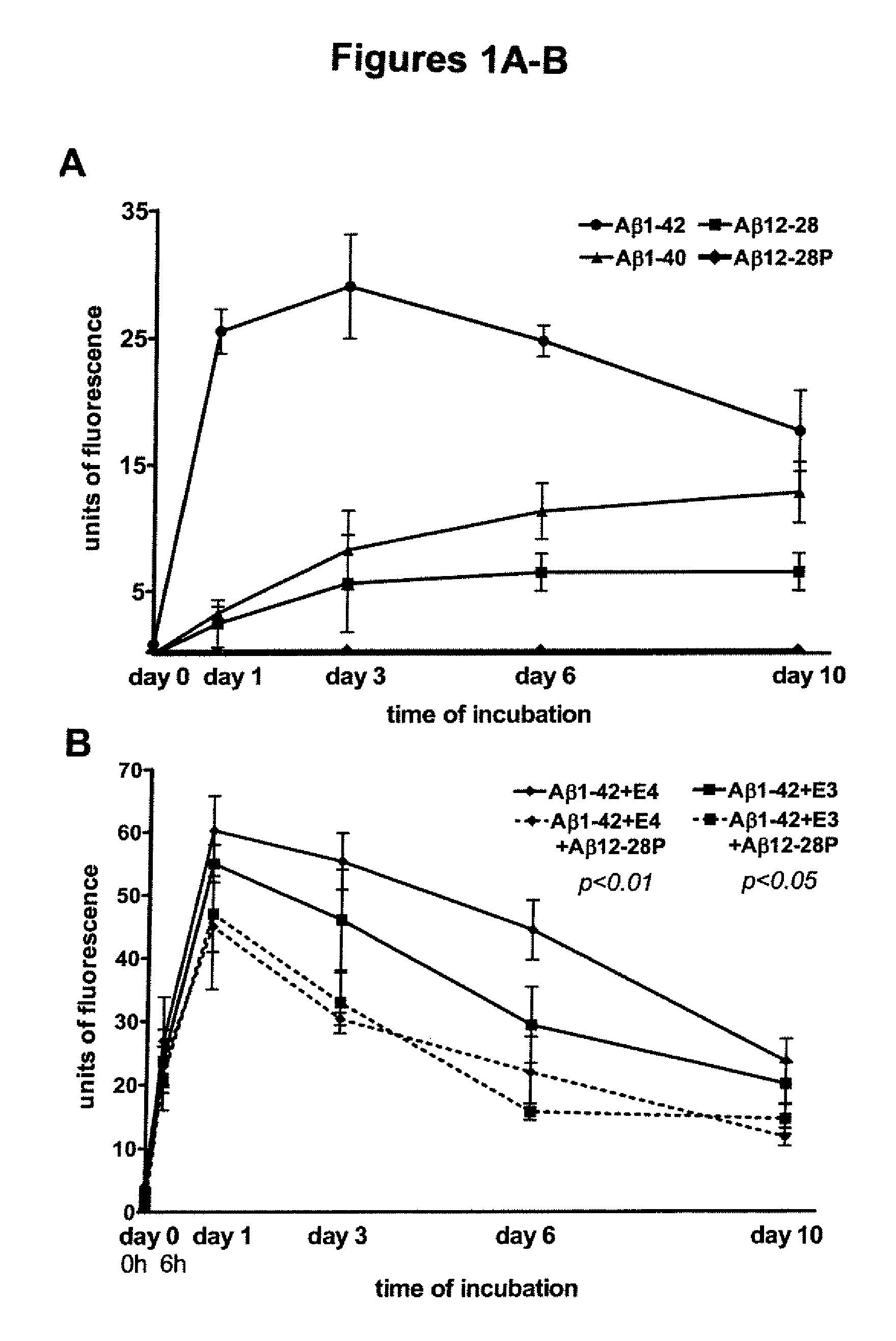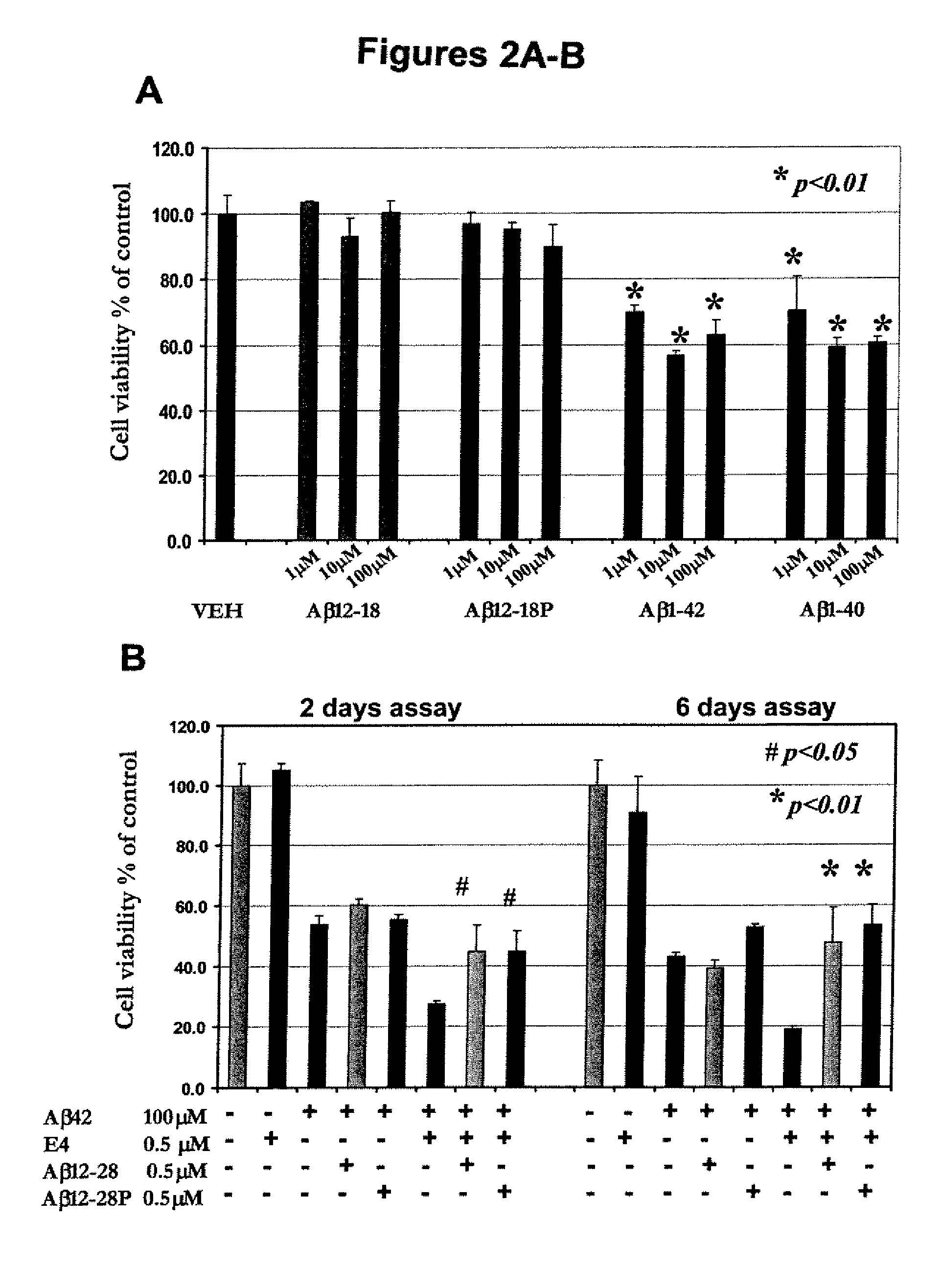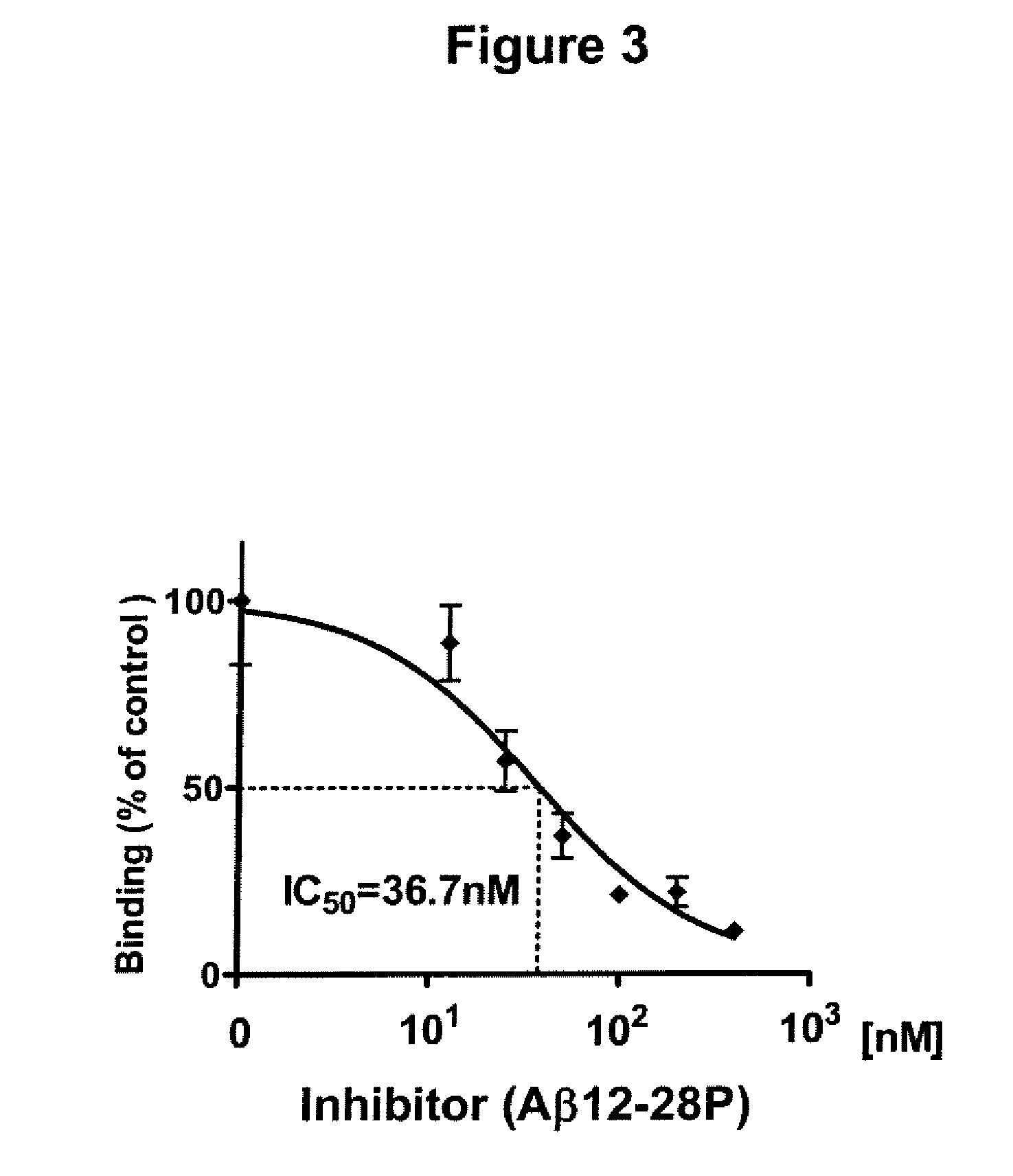Treatment of Alzheimer amyloid deposition
- Summary
- Abstract
- Description
- Claims
- Application Information
AI Technical Summary
Benefits of technology
Problems solved by technology
Method used
Image
Examples
example 1
Synthetic Peptides and Proteins
[0053]The following synthetic peptides were used in this study:
[0054]Aβ1-40, which has an amino acid sequence corresponding to SEQ ID NO: 1 as follows:[0055]DAEFRHDSGYEVHHQKLVFFAEDVGSNKGAIIGLMVGGVV
[0056]Aβ1-42, which has an amino acid sequence corresponding to SEQ ID NO: 2 as follows:[0057]DAEFRHDSGYEVHHQKLVFFAEDVGSNKGAIIGLMVGGVVIAI
[0058]Aβ12-28, which has an amino acid sequence corresponding to SEQ ID NO: 3 as follows:[0059]VHHQKLVFFAEDVGSNK
[0060]Aβ12-28P, which has an amino acid sequence corresponding to SEQ ID NO: 4 as follows:[0061]VHHQKLPFFAEDVGSNK
[0062]In order to minimize degradation by endogenous peptidases and extend the half-life, Aβ12-28P (and Aβ12-28 as a control) were synthesized using D-amino acids and were end protected by amidation of the C-terminus and acetylation of the N-terminus. Aβ12-28P and Aβ12-28 used for all in vitro and in vivo experiments originated from the same batch of large scale peptide synthesis. Details of synthesis, p...
example 2
Circular Dichroism Studies of Secondary Structure
[0064]Circular dichroism (“CD”) was used to study the secondary structure of peptides in solution as described previously (Golabek et al., “The Interaction Between Apolipoprotein E and Alzheimer's Amyloid β-peptide is Dependent on β-peptide Conformation,”J. Biol. Chem. 271:10602-10606 (1996); Soto et al., “Alzheimer's Soluble β-amyloid is Conformationally Modified by Apolipoproteins in vitro,”Neuroreport 7:721-725 (1996); which are hereby incorporated by reference in their entirety). Aliquots of HFIP treated peptides were diluted in 5 mmol / L Tris buffer (pH 7.0) to obtain a peptide concentration of 100 μmol / L, and were incubated at 37° C. CD was measured at indicated intervals with t=0 being immediately after the peptide was reconstituted. Measurements were on a Jasco J-720 spectropolarimeter (Easton, Md.), equipped with a model CTC-344 circular temperature control system (Neslab Inc., Newington, N.H.), at final protein concentration ...
example 3
Aggregation and Fluorometric Experiments
[0065]The fibrillogenic potential of Aβ12-28 and Aβ12-28P was investigated using a Thioflavin-T assay according to previously published methods (Wisniewski et al., “Acceleration of Alzheimer's Fibril Formation by Apolipoprotein E in vitro,”Am. J. Pathol. 145:1030-1035 (1994); Castano et al., “Fibrillogenesis in Alzheimer's Disease of Amyloid Beta Peptides and Apolipoprotein E,”Biochem. J. 306:599-604 (1995); which are hereby incorporated by reference in their entirety). Aβ1-40 and Aβ1-42 were studied for comparison. Aβ12-28 and Aβ12-28P used for these experiments were both synthesized from D-amino acids to avoid effect of different racemic conformers on the fibril formation. All peptides were HFIP treated and reconstituted in 100 mM Tris buffer (pH 7.4) to obtain a 100 μmol / L concentration. Aβ1-40 or Aβ1-42 (100 μmol / L) were also incubated in the presence of 1 μmol / L of apoE3 or E4. In aggregation, inhibition experiments, apoE3 or E4 were prei...
PUM
 Login to View More
Login to View More Abstract
Description
Claims
Application Information
 Login to View More
Login to View More - R&D
- Intellectual Property
- Life Sciences
- Materials
- Tech Scout
- Unparalleled Data Quality
- Higher Quality Content
- 60% Fewer Hallucinations
Browse by: Latest US Patents, China's latest patents, Technical Efficacy Thesaurus, Application Domain, Technology Topic, Popular Technical Reports.
© 2025 PatSnap. All rights reserved.Legal|Privacy policy|Modern Slavery Act Transparency Statement|Sitemap|About US| Contact US: help@patsnap.com



